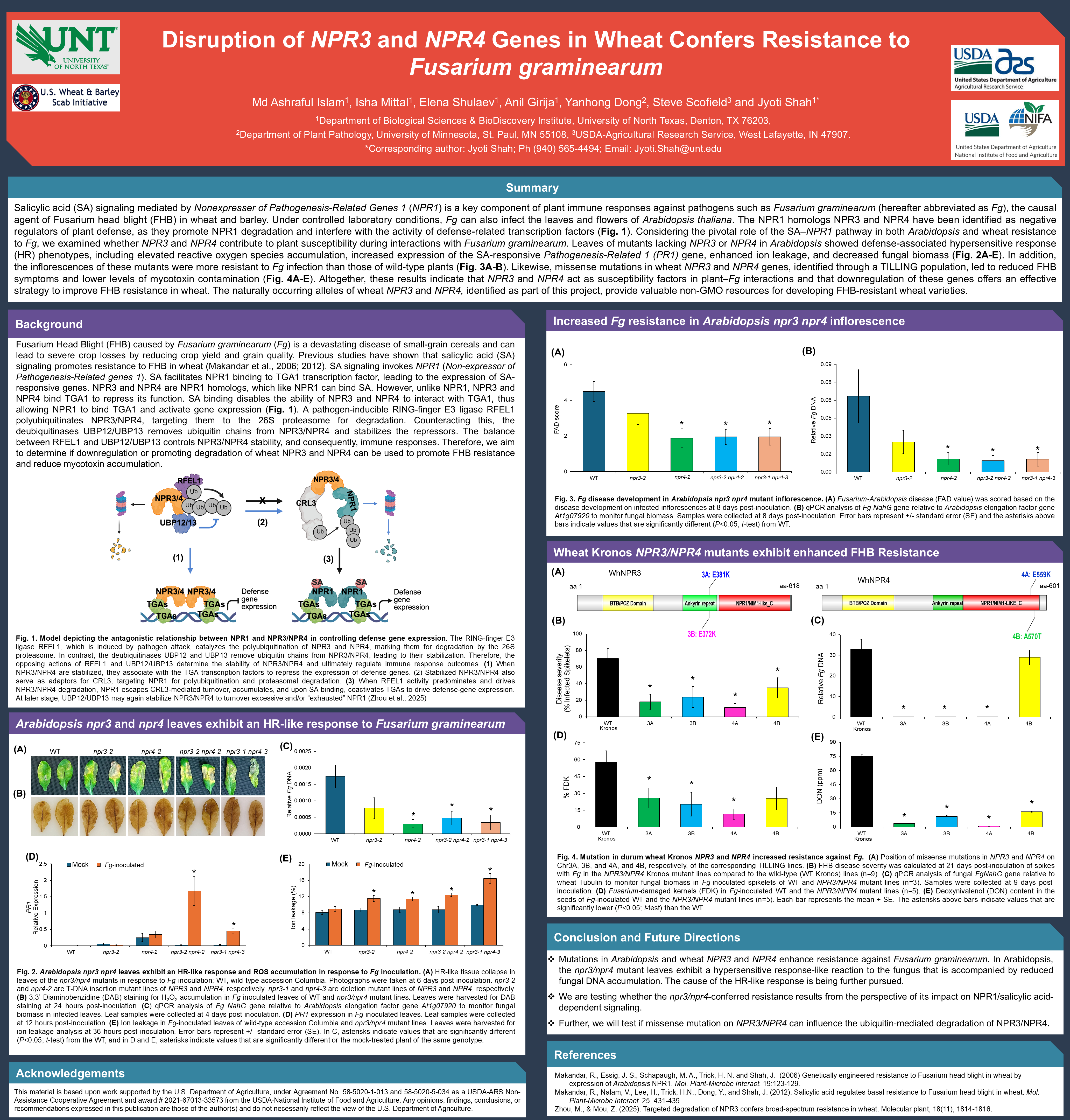Authors: Md Ashraful Islam 1, Isha Mittal 1, Elena Shulaev 1, Anil Girija 1, Yanhong Dong 2, Steve Scofield 3 and Jyoti Shah 1
1. Department of Biological Sciences & BioDiscovery Institute, University of North Texas, Denton, TX 76203
2. Department of Plant Pathology, University of Minnesota, St. Paul, MN 55108
3. USDA-Agricultural Research Service, West Lafayette, IN 47907
Corresponding author: Jyoti Shah; Email: Jyoti.Shah@unt.edu
Presenting Author: Md Ashraful Islam
Abstract
Salicylic acid
(SA) signaling mediated by Nonexpresser of Pathogenesis-Related Genes 1
(NPR1) is a key component of plant immune responses against pathogens
such as Fusarium graminearum (hereafter abbreviated as Fg), the
causal agent of Fusarium head blight (FHB) in wheat and barley. Under
controlled laboratory conditions, Fg can also infect the leaves and
flowers of Arabidopsis thaliana. The NPR1 homologs NPR3 and NPR4 have
been identified as negative regulators of plant defense, as they promote NPR1
degradation and interfere with the activity of defense-related transcription
factors. Considering the pivotal role of the SA–NPR1 pathway in both Arabidopsis
and wheat resistance to Fg, we examined whether NPR3 and NPR4
contribute to plant susceptibility during interactions with Fusarium
graminearum. Leaves of mutants lacking NPR3 or NPR4 in Arabidopsis
showed defense-associated hypersensitive response (HR) phenotypes, including
elevated reactive oxygen species accumulation, increased expression of the
SA-responsive Pathogenesis-Related 1 (PR1) gene, enhanced ion leakage,
and decreased fungal biomass. In addition, the inflorescences of these mutants
were more resistant to Fg infection than those of wild-type plants.
Likewise, missense mutations in wheat NPR3 and NPR4 genes,
identified through a TILLING population, led to reduced FHB symptoms and lower
levels of mycotoxin contamination. Altogether, these results indicate that NPR3
and NPR4 act as susceptibility factors in plant–Fg interactions
and that downregulation of these genes offers an effective strategy to improve
FHB resistance in wheat. The naturally occurring alleles of wheat NPR3
and NPR4, identified as part of this project, provide valuable non-GMO
resources for developing FHB-resistant wheat varieties.

